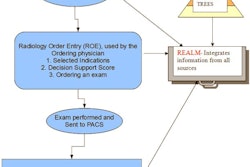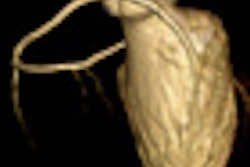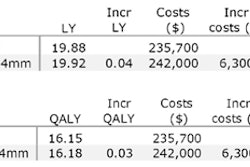If you've ever wondered if you're scanning the right patients with cardiac CT, you'll be glad to know that Massachusetts General Hospital (MGH) asked itself the same question. And it turns out it is, according to a study presented at last week's Society of Cardiovascular Computed Tomography (SCCT) meeting.
MGH researchers reviewed the hospital's adherence to appropriateness criteria for six newly updated indications over several months of CT, and found that 76% of their cardiac CT studies were appropriately ordered.
"The point of the research is how well do we follow the guidelines, and the answer is pretty well," said lead author Dr. Brian Ghoshhajra, director of cardiac imaging at MGH, who spoke to AuntMinnie.com in a conference call with study co-author Dr. Manavjot Sidhu.
In November 2010, the American College of Cardiology Foundation published revised appropriateness criteria (AC) for cardiac CT. Among 31 indications that were carried forward from AC-2006 guidelines, six indications were changed from uncertain to appropriate and two transitioned from inappropriate to uncertain.
The authors sought to report the increase in total studies performed for the newly updated six appropriate indications which were uncertain in the AC-2006 guidelines -- and ultimately determine how well the guidelines were followed previously. The group will eventually analyze data from 2006 through 2010.
But the process was only recently automated, so "it takes the doctors a little elbow grease to get through the charts," he said. "We're going to search backward and see if the guidelines changed anything, and how compliant we were with the guidelines before."
The study team from MGH, Harvard Medical School, and Brigham and Women's Hospital reviewed records of 162 patients who underwent clinical gated cardiac CT between December 2010 and March 2011, classifying their indications as appropriate, or if not addressed in the criteria, as unclassified.
The hospital uses an automated radiology order-entry system, which asks a series of questions to help determine the appropriateness of the study, according to Ghoshhajra.
Out of the total 162 studies analyzed, 123 (76%) were appropriate, 16 (10%) were inappropriate, 15 (9%) were uncertain, and eight (4%) were unclassified.
Most of the "uncertain" indications consisted of preoperative evaluation of patients for noncardiac surgery without active cardiac conditions, cardiac CT in the setting of a prior inconclusive stress test, and detection of coronary artery disease in other clinical scenarios.
"Although we have pretty good adherence, we usually don't cancel a scan that's ordered," Ghoshhajra said. "We don't try to second guess the referring docs. Every patient is unique and there's usually a pretty good reason."
Under the revised AC-2010 guidelines, 12% of cardiac CT studies became appropriate that would have been considered uncertain indications according to the AC-2006 guidelines.
Chest pain in the absence of known heart disease still isn't indicated, the authors noted.
"Chest pain in the emergency room is not part of the guidelines yet," Ghoshhajra said. The evidence is "not quite there yet," he added, noting that one of their co-authors, Dr. Udo Hoffmann, is looking at this question in a large National Institutes of Health (NIH)-funded study known as Rule Out Myocardial Infarction/Ischemia Using Computer Assisted Tomography (ROMICAT) II.
Following the guidelines is important for a large academic teaching hospital such as MGH, Sidhu told AuntMinnie.com.
"This is an academic center, and so much knowledge is exchanged on a department level; for example we have the cardiac CT/MR program where all the cardiologists, radiologists, and internists come for training," Sidhu said. "We have multidisciplinary conferences and grand rounds, and because of that we tend to believe that the majority of our scans should fall into appropriate categories."
The academic setting does also eliminate self-referral problems, which have been found to increase the use of imaging in environments where there are financial incentives to scan more patients, he said.
As further clinical trials are performed, the group expects existing uncertain indications to further transition into appropriate or inappropriate categories. But for now, 76% seems about right.
"I would be concerned if we had 100% compliance," Ghoshhajra said.



















